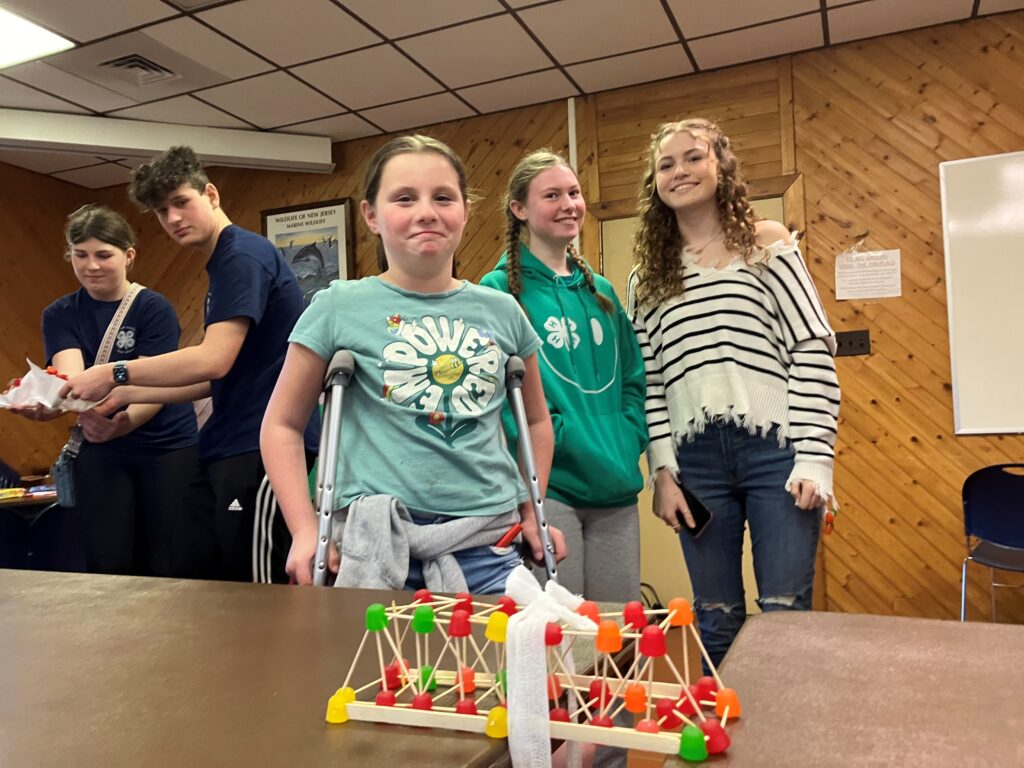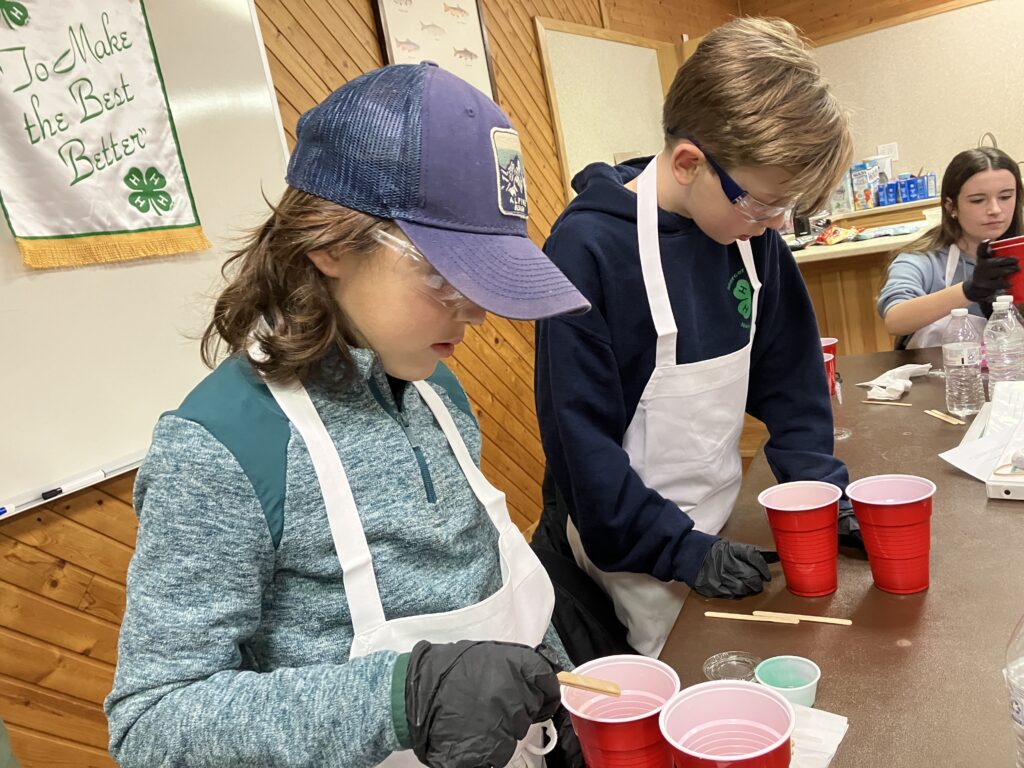Main Content

One part of an effective 4-H club meeting is a fun and educational program, project or activity. The Clever Clovers 4-H Club started the year with an exciting activity at their January meeting – making soap from goat milk! The members chose pigments, designs and fragrances. After the bars cured, each youth was able to take home their creation.
During their February meeting, the Clever Clovers created an educational video about three rare breeds of goats, chickens and rabbits found in their club. With scripting, directing, filming, narrating, and editing, all members found a way to contribute. Most recently, during their March meeting, the Clever Clovers tested their engineering design skills by working in teams to build bridges using gumdrops and toothpicks. Then they tested each bridge’s maximum load and celebrated their success!


The 4-H program uses a learn by doing approach when working with youth. As much as possible, adults supply minimal input to youth and encourage them to explore and develop solutions to meet a challenge or situation. The formal name for this engaging learning process is called experiential learning. It can ultimately be described as having three major parts: Do, Reflect, and Apply.
Do: 4-H leaders encourage ideas by asking questions that inspire members to think about possible outcomes.
Reflect: When youth reach a point in the process where they can see what actually has happened, they are asked to share, or reflect.
Finally, Apply means 4-Hers generalize how their new knowledge or skill can be applied in other real life situations.
If you have a skill you would like to share with youth, please contact us to learn about how you can volunteer your time and talent: bejgrowicz@njaes.rutgers.edu